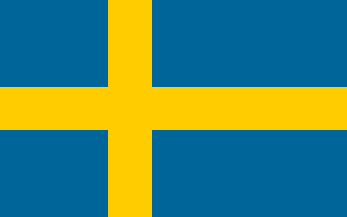
[0878] A wooden D6 with swedish words, 30 mm
[0879] A replica rectangular antler dice from the Viking and Anglo-Saxon Age, Sweden, 43x24 mm
Such dice were made of antler for the most part, although examples of bone,walrus ivory and jet are also known.
More perishable materials, such as wood and horn, were also likely to have been used.
They were often rectangular, with the 1 and 2 on either end and the 3,4,5, and 6 on the four long sides.
Others types were also found including modern shaped and numbered examples.
Although the numbers on opposite faces do not always add up to seven (as on a modern dice),
this arrangement is the most common. One curious dice found in Viking Dublin is a cubic dice,
much like most modern dice, but has the curious number combination of 3, 4, 4, 5, 5, 6.
This is reminiscent of the 'average' dice used in some modern 'wargaming' (in this case with the numbers 2, 3, 3, 4, 4, 5).
The nature of the games played with dice are unknown, but simple games such as 'who can get the highest (or lowest)
number were probably common (and are suggested by some of the sagas), as were games similar to 'liar dice' or 'yahtzee'.
The 'long-dice' are usually found in sets of two or three, and normally have the numbers 1 and 2 on the smallest face,
suggesting they were used for a game where low numbers were needed, although there is also a suggestion they were used for tabula/kvatrutafl.
The use of the 'average' dice is unknown, but again may be for tabula/kvatrutafl.
Dice have also been excavated that when x-rayed, revealed small weights inside them to deliberately favour one number; i.e. there were cheats even then.